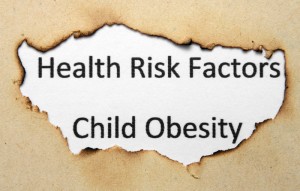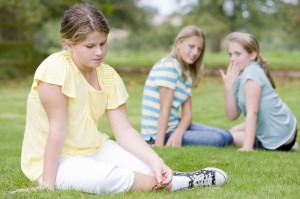Childhood obesity is now reaching epidemic proportions in many of our modern western societies. Many people are asking, “are parents to blame for childhood obesity”, so what are the answers and how can we all help to do something about it?
 The Australian Government National Health and Medical Research Council states that in 2011–12, around 60% of Australian adults were classified as overweight or obese, and more than 25% of these fell into the obese category (ABS 2012). In 2007, around 25% of children aged 2–16 were overweight or obese, with 6% classified as obese (DoHA 2008).
The Australian Government National Health and Medical Research Council states that in 2011–12, around 60% of Australian adults were classified as overweight or obese, and more than 25% of these fell into the obese category (ABS 2012). In 2007, around 25% of children aged 2–16 were overweight or obese, with 6% classified as obese (DoHA 2008).
You can see from these figures kids are now following in many of their parent’s footsteps so, as responsible parents, we need to become more vigilant than ever and lead the way.
Another recent poll I came across suggests London is now worse than New York when it comes to obesity among its young people, and the UK as a whole has won the rather unflattering award of being the worst country in Western Europe when it come to this widespread affliction.
Developing countries are by no means immune either. Even certain parts of Africa are struggling. Mexico, too, finds itself not far behind America with the sheer number of its children who are obese.
And looking at research taken from the Dietitians Association of Australia website it says that between 1985 and 1995 the rate of childhood overweight doubled and obesity tripled in Australia.
Unfortunately, overweight and obesity in Australia remains on the rise. Results from the 2007-2008 Australian National Children’s Nutrition and Physical Activity Survey indicated that one in four children aged 5-17 years are now overweight or obese.
Lifestyle health risks long thought to be the preserve of adults such as high blood pressure, heart disease and diabetes, are commonly found in children now as a result of this epidemic.
I find this sort of news really depressing especially knowing it can be avoided. Our kids are our future and they need to be looked after so we need to urgently address the causes of obesity in children and come up with some solutions.
Many experts feel that the prevalence of these problems among so many young people is a veritable cardiovascular time bomb just waiting to go off, and that an explosion in heart disease is inevitable.
In some cases genes may be a contributing factor, but the soaring numbers in obesity indicate that something other than just a genetic predisposition must be to blame. “Most excess weight is caused by kids eating far too much (of the wrong foods) and exercising way too little,” so says the Mayo Clinic, USA.
Indeed, a huge contributing factor is the tendency toward eating too much fast food and highly processed foods.
Parents are increasingly under pressure to work longer hours and consequently don’t have the time or inclination to cook nourishing meals as was the case in previous generations when time wasn’t so stretched and we often had the luxury of extended families.
To fill this demand, fast food outlets now pretty much dominate the highways and main streets of our towns and are readily spotted along the road with their slick marketing posters designed to have kids salivating. It works on adults too, of course. Typically such foods, while undeniably tasty, are packed with sugar and bad fats and invariably are sold with huge cardboard cups of sugar-laden soft drinks.
Contributing further to childhood obesity is the increasingly sedentary lifestyle of young children. It is no surprise that there is a correlation between the modern outbreak in obesity and a similar mushrooming in entertainment via computer games, the internet and TV.
Options for entertainment that involve zero exercise are off the scale when compared to entertainment options of previous generations. Much of this entertainment is now readily available thanks to the World Wide Web, which has revolutionized the way people spend their spare time.
So what is the solution?
As parents (and grandparents), we need to ensure more fruits and vegetables are included in our kids diets, and make a determined effort to cut back on convenience foods, processed foods and soft drinks.

According to one source I discovered, one 660-ml soft drink per day could result in as much as an 11 kg weight gain per year. Replace sugary soft drinks with low-fat milk drinks (some of these have lots of sugar too so beware). When all is said and done, just plain old water is best.
Also, cooking methods can also make a big difference. Instead of frying, try roasting or steaming foods. Food retains more of its goodness that way.
Ensure your children eat a wholesome breakfast too (but not those sugar laden breakfast cereals even though the box tells you how good they are). It’s all too easy with the demands of modern life to skip this important meal, but doing so usually means overeating (often junk food) later in the day.
Interestingly, it has been found that eating in front of the TV decreases awareness of satiation, leading to the temptation to eat more than is necessary. Instead, do it the old-fashioned way and eat at the table. It is a great way for the whole family to catch up and have a chat. And talking of the TV, set limits on time spent in front of it.
The same goes for computers, laptops and iPhones. Encourage physical activities such as bike riding, kicking or throwing a ball around, or even skipping. And don’t forget to plan days out for your family that involve exercise but that are also fun. Go swimming together, or visit the park and engage in some activity that is enjoyable and involves running around a lot.
Being aware of the dangers outlined here, and ensuring your precious kids have a good diet and a healthy amount of exercise, will go a long way in combating this modern day epidemic when it comes to your family’s health.
In closing, here are some interesting statistics on childhood obesity I came across at the Australian Bureau of Statistics web site. The data reveals parents are starting to win the war on childhood obesity. Now that’s heartening to hear.
Need some more help or ideas…..then check out HealthDirect Australia.
Leave a Reply